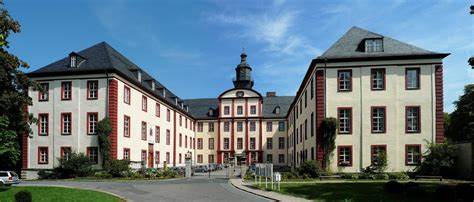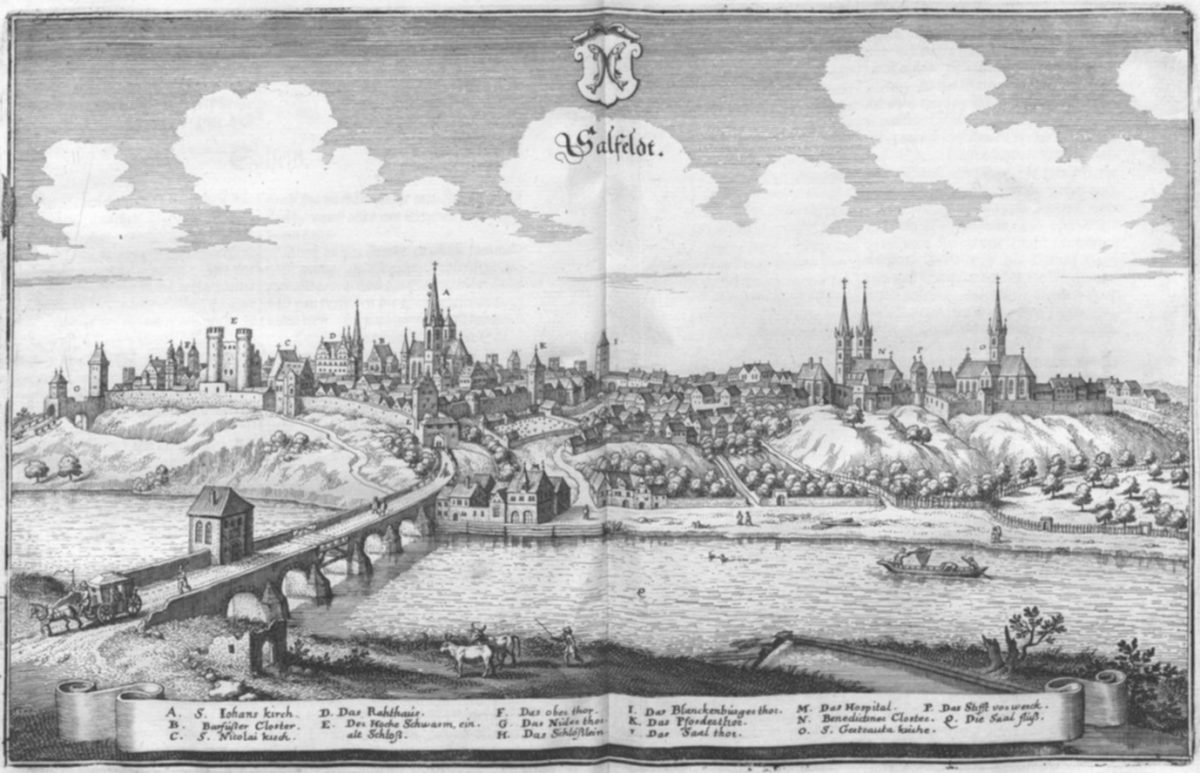The medieval historian Lambert of Hersfeld, held that Anno II, Archbishop of Cologne founded the Benedictine monastery of St. Peter and Paul in 1074 with religious independence and a bequest of land and assets. Pope Honorius II in 1124 confirmed the founding, as did the Archbishop of Mainz the following year.
Saalfeld Abbey set up houses of prayer (Propsteien) at Coburg from 1075 and at Probstzella. The monastery became a centre of ecclesiastical power in Thuringia.
The town grew after the Counts of Schwarzburg received Saalfeld in 1208 from Otto IV. Saalfeld was purchased in 1389 by the Counts of Thuringia remained a possession of the House of Wettin. At the end of the 14th century, Saalfeld was on the trade route leading north from Nuremberg to Leipzig.
The abbey was severely damaged during the German Peasants’ War in 1525, secularised in 1526 during the Reformation and sold in 1532 to the House of Wettin. The surviving buildings were used as offices for the Electoral administration.

Ducal palace built on the site of the former Benedictine abbey, the residence of the Dukes of Saxe-Saalfeld from 1680 to 1735.
The Duke of Saxe-Gotha, Ernest the Pious, died on 26 March 1675. The Principality was divided on 24 February 1680 among his seven surviving sons. The lands of Saxe-Saalfeld went to the youngest of them, who became John Ernest IV (1658–1729), the Duke of Saxe-Saalfeld and were united with Coburg in 1699
Francis succeeded his father as reigning Duke of Saxe-Coburg-Saalfeld in 1800. Emperor Francis II dissolved the Holy Roman Empire on 6 August 1806, after its defeat by Napoleon at the Battle of Austerlitz. Duke Francis died 9 December 1806. On 15 December 1806, Saxe-Coburg-Saalfeld, along with the other Ernestine duchies, entered the Confederation of the Rhine as the Duke and his ministers planned
Frederick IV, Duke of Saxe-Gotha-Altenburg died in 1825 without an heir. This resulted in a rearrangement of the Ernestine duchies. Ernest received Gotha on 12 November 1826, but had to cede Saalfeld to Saxe-Meiningen.
